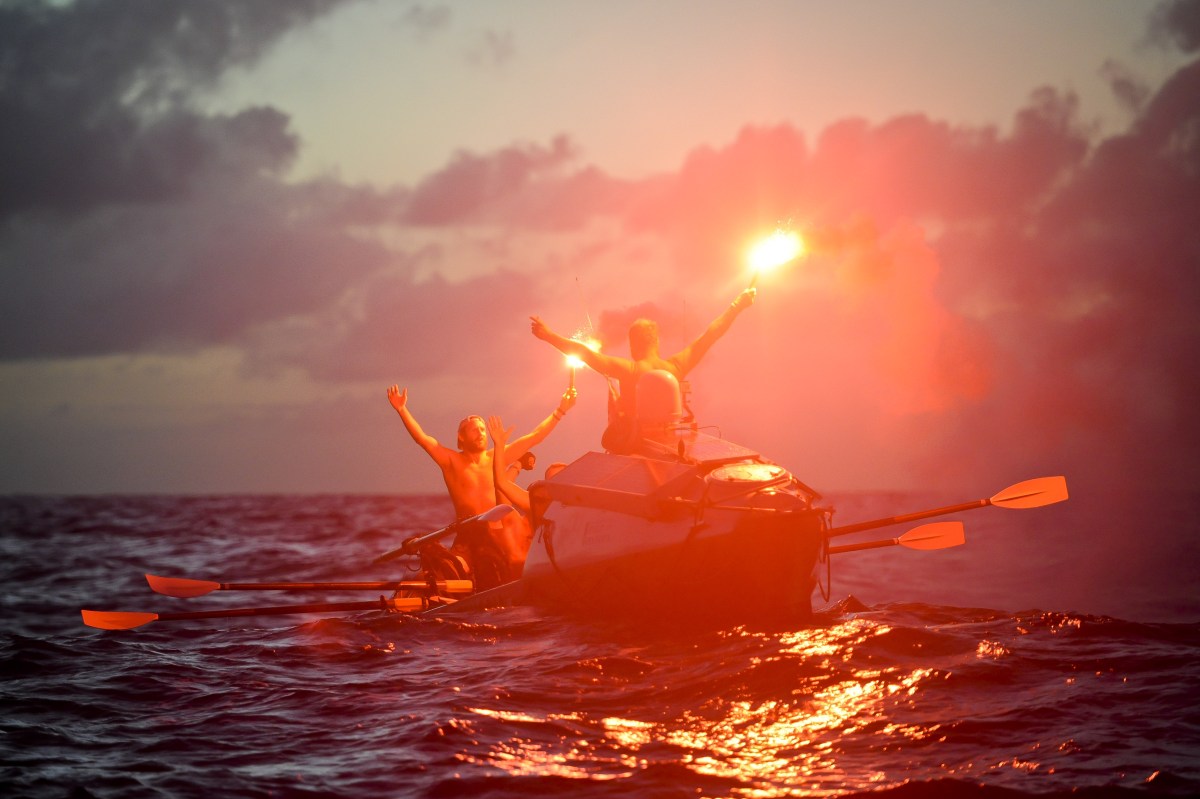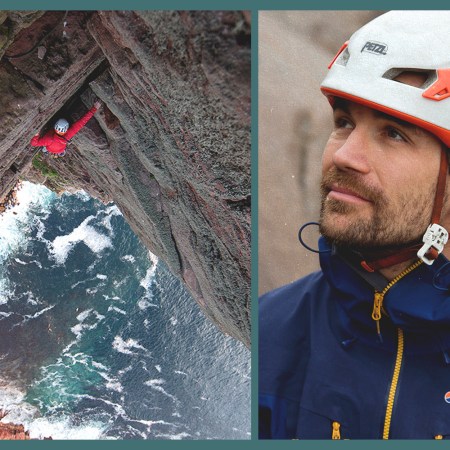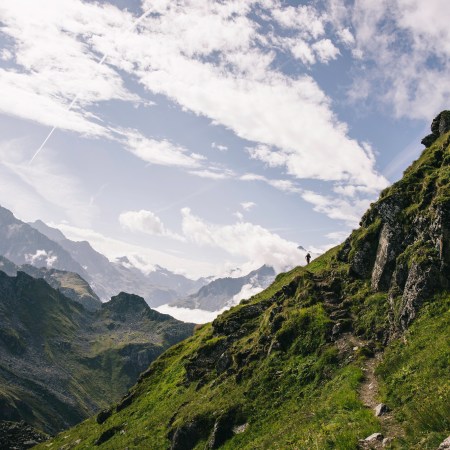We’ll get ahead of this nice and early: InsideHook is not liable for those who choose to attempt (and will almost certainly fail, in spectacular, limb-endangering fashion) to complete the each of the best endurance events of the year.
In a different time, this sort of calendar might’ve functioned as a tongue-in-cheek hypothetical. Or perhaps just a bucket-list repository of events that endurance athletes could sign up for, at some point in their careers. But these days, we’ve got people running seven marathons in seven days, on seven different continents. The adventurer’s arms race has firmly lost the plot, so…you just never know.
However you choose to process this calendar — aspirational or a legitimate call to arms — just know that it is chok-full of crazy challenges that 99% of the planet can’t do and probably shouldn’t want to. Racing is now firmly in the survival sphere. Keeping your heart rate nice and low during any ultra is hard enough. How about doing so while pitching camp, deep in a damp jungle, with another 50 miles to run tomorrow?
Below, 12 endurance races, one for each month of the year, with a focus that goes well beyond the world of running. We’ve got stints of cycling, climbing, rowing and even sled-pulling, if that’s your thing, across locations all over the world. Pick your poison, or pick all of them, and start downloading David Goggins’ podcasts offline. There isn’t much service where you’re headed.
January: Arrowhead 135
Where: International Falls, Minnesota
Why: There are plenty of summery Southern Hemisphere races at this point in the year, but where’s the fun in that? The Arrowhead 135 is held each year in International Falls, Minnesota, America’s coldest town. Checks out. Racers’ choice; you can cover those 135 miles by bike, on foot, or even on skis. But you have to carry your own food, water and survival gear. Like most races on this list, there’s a time window — the race must be completed within 60 hours. (The all-time record is just under 12 hours.) The Arrowhead 135 is essentially a perennial power vortex. Temps are guaranteed to hit -30 degrees Fahrenheit. In an average year, 50% of racers fail to finish.
February: Yukon Arctic Ultra
Where: Whitehorse, Canada
Why: Another inconceivably cold ultra, deep in the northerly Canadian wilderness. Similar to Arrowhead 135, athletes have the option to run, bike or ski this race. They also have a dastardly a suite of distance preferences at their disposal: marathon, 100-mile, 300-mile and the grueling 430-mile. Each competitor must pull a sled carrying their survival gear, food and water, with only occasional checkpoints for aid, and each race begins at Whitehorse, which isn’t just frozen at this time of year…it’s dark. February days here last just nine hours. Still, a bonus of sorts: Whitehorse has the Guinness World Record distinction of “the city with the least air pollution” in the world.
March: The Barkley Marathons
Where: Frozen Head State Park, Tennessee
Why: For some context, was a big deal this year when three people completed The Barkley Marathons. Only 15 have managed to make it to the finish line since race operator/jolly masochist Lazarus Lake invented the race back in 1986. The Barkley was created after Lake (whose real name is Gary Cantrell) read about the escape attempt of James Earl Ray, Martin Luther King Jr.’s assassin, who broke out of the Brushy Mountain State Penitentiary in 1977. Ray lasted only 12 miles in the Tennessee wilderness before he was recaptured; Cantrell reckoned he would’ve been able to travel at least 100 miles, terrain, elevation change and weather conditions notwithstanding. Today’s race has a 60-hour time limit, and 63,000 feet of elevation gain. No matter how much of a badass you may be, there’s no guarantee you’ll ever get to race it: Cantrell populates the race through ultra-secret means. “Virgins” must write an essay explaining why they should be allowed to run the race; if accepted, they receive a “letter of condolence.”
April: The Patagonman Xtreme Triathlon
Where: Aysén Region, Chile
Why: Some races are loops. Others are point to point. Patagonman is fjord to lake. This triathlon traipses through 140.6 miles of Chile at its most prehistoric. The Aysén Region is filled with ice fields, volcanoes, rain forests. Most travel sites worth their salt send people here for their “perfect Patagonian road trip.” You get to swim, bike and run through the region, beginning with a leap from a ferry into an icy lake, and followed by a 112-mile bike ride along the Carretera Austral, as well as a marathon through unpaved paths. The race operators offer precisely one guarantee: “It will be tough and it will be beautiful.”
May: The Dirty Kanza (UNBOUND Gravel)
Where: Emporia, Kansas
Why: God, we wish this name still existed. Technically, the Dirty Kanza, is now “UNBOUND Gravel,” which sounds (a little) less like a “big move” in the bedroom. UNBOUND is the world’s premier gravel grinder race — which means it incorporates elements of asphalt, gravel, dirt and single track — and tackles 350 miles of the most remote and unforgiving gravel roads throughout Cowley County. Weather usually plays a devilish role, even this early in the year: either the temperature’s pushing past 100°F, or the rain’s turning the paths to mud. Riders spend long hours in the saddle with minimal support, with checkpoints 50 miles apart. Nonetheless, the event has surged from 34 riders in its first year (2006), to now near-3,000 a year.
June: Dragon’s Back Race
Where: Wales, United Kingdom
Why: Wales is a far cry from the Himalayas, but Dragon’s Back covers an elevation gain equivalent to two Mount Everests. The six-day trek traces the mountainous spine of the country, covering 196 miles in the process. Runners start in Conwy Castle, finish in Cardiff Castle and, along the way, encounter torturous terrain — rocky crags, boggy grasslands and everything in between. The race is so difficult that operators will reward participants who complete even just half of it. They’re adamant that this “isn’t a trail race,” calling it “the toughest mountain race in the world.”
July: The Badwater 135
Where: Death Valley, CA
Why: You know the one. The fact that this mind-melter of a race race takes place in July feels a little gratuitous, but that’s the point. Badwater starts in Death Valley (282 feet below sea level) and ends at Mount Whitney Portal (8,300 feet). It covers 135 Death Valley miles three mountain ranges. Temperatures climb to 130 degrees. Even the fastest runners need a full 24 hours to finish the race, and like the Barkley Marathons, there are way more people trying to get into this race than those allowed to run it each year. Nota bene: auxiliary intravenous fluid will result in automatic ejection.
August: Norseman Xtreme Triathlon
Where: Eidfjord, Norway
Why: It’s August in Norway, and the water is so cold that PhD’d adults are still conducting a multi-year “Cold Water Research Project” to make sure athletes have a fighting chance. The fabled Norseman has no support crews, no cheering crowds, no predictable weather. Like Patagonman, the race starts with a leap into a fjord, followed by a full Ironman: the full swim, a cycle through the mountains, and a full marathon with a finish atop the Gaustatoppen Mountain Mountain. Not for nothing, this might be the most beautiful race on offer here. From your perch on Gaustatoppen, they say, you’ll be able to see one-sixth of Norway. Feel free to hallucinate the rest.
September: Tor des Géants
Where: Aosta Valley, Italy
Why: Courmayeur is an award-winning ski hamlet in the Italian Alps. Tor des Géants begins and ends here. At 205 miles, it’s one of the longest ultramarathon trail races in the world. Runners (we might as well call them hikers) have to digest 78,700 feet of elevation gain and 25 mountain passes within a 150-hour time limit. Grueling, to be sure, and there are far gentler ways to pass through Alpine towns, but considering this calendar includes stints near the Arctic Circle, you could do worse than gliding through Italy’s “High Regions” over the span of a week. Here’s what it looks like.
October: The Coast to Coast Adventure Race
Where: South Island, New Zealand
Why: This one starts on the windswept beaches of Kumara, passes through the Southern Alps and concludes on the golden sands of New Brighton Beach, in Christchurch. Competitors cycle, “mountain-run” and kayak their way across the South Island’s rugged spine. It’s is a popular one, thanks to that wild card of a third activity, but tread carefully: 43 miles on Waimakariri River (most of it passing through a gorge, before emptying out onto the Canterbury Plains) is no joke. Over 40 years, the record time for getting oneself from the Tasman Sea to the Pacific Ocean — or, you could say, traversing Middle Earth — is a little over 10 hours.
November: Jungle Ultra
Where: Peru
Why: There’s environment that might be a worse stage than the desert for an endurance event. Peru’s Jungle Ultra takes runners through 142.6 miles of the Amazon Rainforest. It’s humid, it’s hot, it’s hilly. Runners have to carry hammocks, food, and survival gear up 9,000 feet of elevation, in temperatures that regularly careen past 90 degrees. How’d you like to be at your stickiest, racing under a canopy so thick, that you begin to forget what the sky looks like? This race takes place in the Manu National Park, of the most biodiverse areas on the planet, which is probably best enjoyed from a couch, while watching Planet Earth.
December: Talisker Whiskey Atlantic Challenge
Where: La Gomera, Canary Islands to Antigua
Why: Theworld’s toughest row. Talisker takes challengers (madmen) on a 3,000-mile journey across the Atlantic. Most of this calendar’s challengers take a week at most. But the crucible of ocean rowing generally stretches anywhere from 40 to 90 days. The row starts at San Sebastián in La Gomera, Canary Islands, and finishes in Nelson’s Dockyard English Harbour, Antigua & Barbuda. It’s December, so expect storms. Plus: giant waves, sleep deprivation, salt sores, blisters. On the bright side, you’ll have a front-row seat to some spectacular sunsets and star-filled nights.There’s no support, no pit stops, no toilets. All your food for the journey must be carried on board from the start, while your boat’s desalinator will provide the freshwater needed to survive. The record time to cross is 29 days, 14 hours, and 34 minutes.
Whether you’re looking to get into shape, or just get out of a funk, The Charge has got you covered. Sign up for our new wellness newsletter today.
























